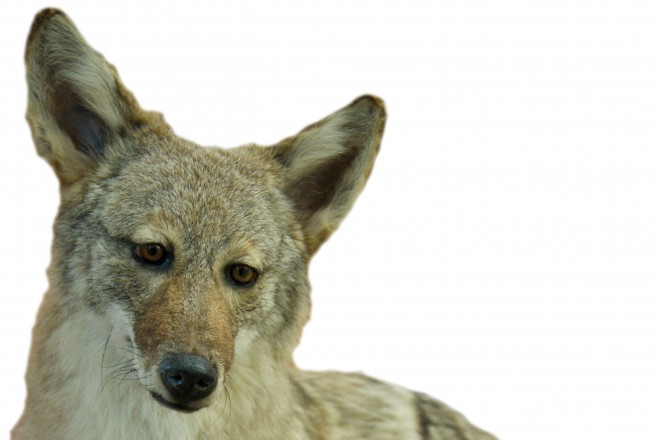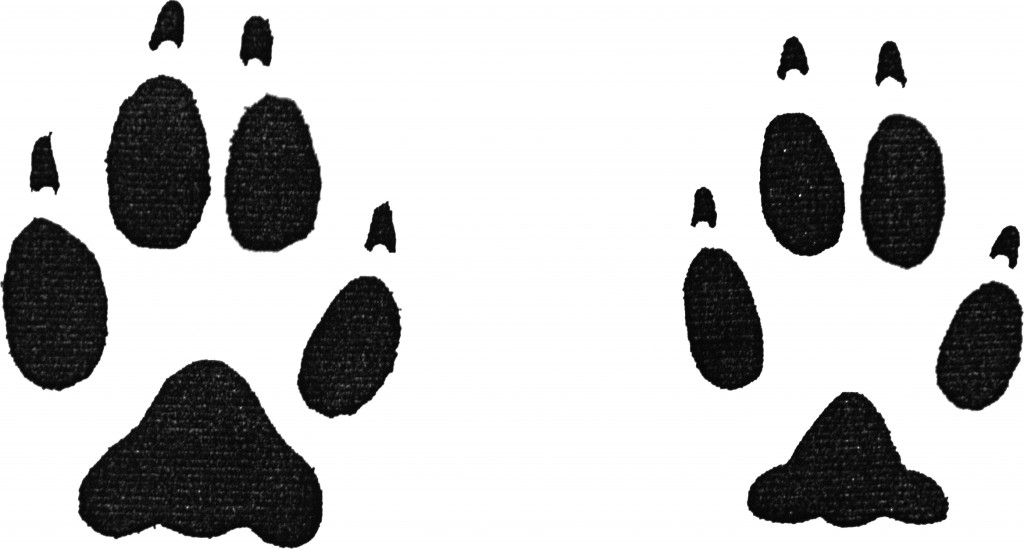The Wiley Coyote
- Share
- Tweet
- Pin
- Share

Article by Roy Lukes
My very first introduction to a Coyote was when I was a junior in high school, 1946, and the movie cartoons, either Looney Tunes or Merrie Melodies, began including what became one of their all-time favorites, “Wile E. Coyote and the Road Runner.” The first encounter with a live Coyote Charlotte and I had was in November of 1989 while driving along the interstate through Nebraska on our way to Boulder, Colorado. The wary and intelligent creature very obediently stopped at the edge of the highway and looked carefully both ways before making its safe crossing.
As a teenager I always enjoyed hanging out at Hessel’s Sport Shop in Kewaunee hoping to hear some of the old-timers tell hunting and fishing stories. As I recall, none of them ever mentioned seeing a Coyote or a Wolf in the county. Hartley H. T. Jackson tells in his great book, Mammals of Wisconsin, of so-called brush or prairie wolves (Coyotes), being quite common in western Wisconsin in 1821, while near the present town of Lodi, Columbia County, in September 1832, “the sight of a prairie wolf was not an uncommon thing.” My guess is that Coyotes really did exist in Kewaunee County during the 1940s. The Coyote is one of the few animals which have actually increased their range on this continent during the past few centuries.
The population of Coyotes in northern Wisconsin is relatively small and quite stable, simply because of the Wolves there. In what is considered to be prime Wolf country, Coyotes are absent. Farther to the south, where Wolves have long become extirpated, Coyote population continues to grow. Indeed they have adapted well to humans, to cities, and expansive regions of agriculture. In short, they have become quite urbanized where they appear to exist very well on rodents, pet foods and small pets, berries, acorns, human food from garbage cans and even garden vegetables. Like most predators, they are opportunists of the first degree.
It was while doing research at the main Door County Library for my Toft Point book that I read through around 50 years of Baileys Harbor news columns in the Door County Advocate on microfilm. Every now and then the news of someone shooting a Wolf was mentioned, but I assume that the animal was in actuality a Coyote. Fairly frequent reports reach me today of people seeing Wolves, the great majority of which surely are Coyotes.
Yes there are, or have been, Wolves in Door County. Check at the Newport State Park Nature Center, and with Michelle Hefty, manager of the park, for the most up-to-date report on Wolves in the county. The Newport area, though, is better known for its excellent Coyote habitat. Gordon and Donna Nelson, who have farmed there for many years, have seen and heard Coyotes regularly. Other friends in northern Door County, including Nick and Gail Anderson who live east of Peninsula Players, enjoy nightly “concerts” staged by the Coyotes who in so doing are simply howling their song, communicating, and telling other Coyotes where they are. By the way, Coyotes are soprano singers, much higher in pitch than Wolves.

The average Wolf is roughly twice the size of a Coyote. The Coyote has a thinner muzzle, rather large pointed ears that open toward the face, and they carry their proportionately longer tails held low. The Wolf carries its shorter tail held upright.
The Coyote carries a price on its head no matter where it goes. It has been hunted, trapped, poisoned, dug out of dens, shot from the air, gassed, burned, and killed using dogs. These are only some of the less barbaric methods of destroying them. For many years there has existed an ongoing struggle between people who raise livestock for human consumption, or hunters who relish their game, and the Coyote, the predator, whose nature it is to hunt. Unquestionably, Wile E. Coyote is the most persecuted animal in North America which is why I will always side with it. Why not acknowledge this creature as an inevitable part of the natural scene? They’re here to stay.
A fact that Coyote hunters would find hard to believe, and very unlikely wouldn’t accept, is that by killing the unwary Coyote, which is what most often occurs in hunting them, they provide this species with the very best genetic material for breeding to deal with the technology being aimed relentlessly at them. An old saying applies to these universally vilified animals, “Once burned, twice shy.” Surviving encounters with humans makes the Coyote all the more craftier and shy.
Coyotes will prey on both Gray and Red Foxes but they continue to co-exist very well. Research has shown that raccoons, by preying upon the eggs and young, have a considerably greater impact than Coyotes on the success of ducks, pheasants, Ruffed Grouse and Turkeys. It has been clearly documented that in cattle and sheep country Coyotes can inflict considerable damage to livestock during the birthing season. However, what surprised the researchers is that wild dogs, often overlooked, do much killing, too, as much as 50 percent in some areas.
Preferred wild foods of Coyotes include meadow voles, mice, rabbits, hares, and other small mammals which make up around 85 percent of their diet. Ruffed Grouse, deer, birds, reptiles, amphibians, insects, fruits, berries, dead animal carcasses, and poultry are also consumed. Ernest Thompson Seton, one of America’s greatest naturalists of years ago, said, “While a hunter by profession and by choice, there is nothing in the way of fish, flesh, or fowl, dead or alive, ancient or modern, that the Coyote disdains for food.”
Here are some suggestions for avoiding confrontations with this born hunter: don’t let your pets or their food out at night; don’t make food or water storage areas available for them, and use high-quality garbage cans with tight-fitting lids. If there is a problem Coyote, destroy it. There is year-round hunting with no bag limits on Coyotes in Wisconsin, but there is a defined trapping season. It is better to leave Coyotes that do not kill livestock on their territories alone so that they will keep other Coyotes, who might be livestock killers, away.
Many wildlife specialists look at this secretive, shy, mainly nocturnal animal as being a true survivor because of its unusually excellent mental and physical traits. There are those, including me, who feel that the Coyote has the very best eyes, ears and nose of anything in nature. Here is a sanitary engineer, health officer, garbage man and exterminator all wrapped up in one animal. Long live Wile E. Coyote!



